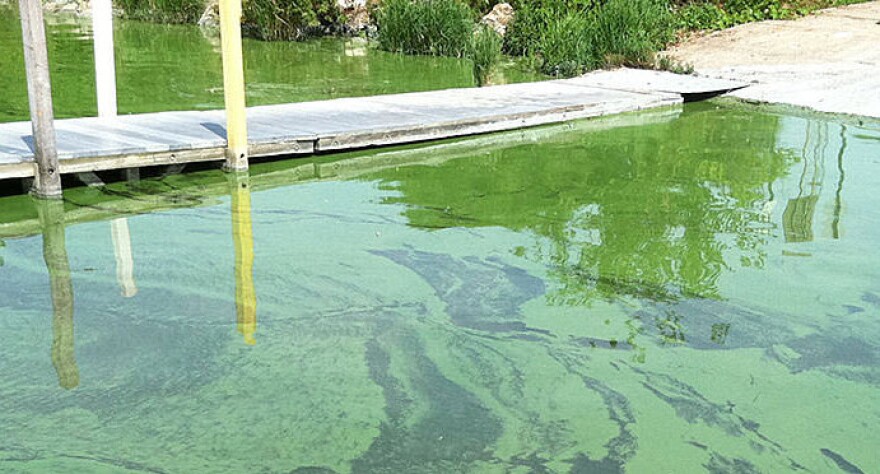A new study from the University of Michigan shows that blooms of harmful cyanobacteria in Lake Erie are so tough they can survive the winter.
Toxic cyanobacterial blooms have become a regular summer occurrence in western Lake Erie. State and federal environmental authorities have focused on limiting fertilizer runoff from farmland as a way of reducing the blooms. But this new research shows that some cyanobacteria are surviving on the lake bottom through the winter. That means those remediation efforts might be more complicated than expected.
Tom Johengen is a one of the authors of the study.
"I think of them as sort of the dandelions. If you see some there the previous year, you know that they're producing a whole lot of seeds that are just going to come back the following season," he says.
The researchers collected sediment samples from 16 sites in western Lake Erie between November 2014 and April 2016. They looked at the presence of a type of cyanobacteria known as Microcystis. It has a balloon-like structure that enables it to float back up to the surface after a period of winter dormancy. It is generally known to have an annual cycle of blooming in summer, becoming dormant in the winter, and then emerging again in the spring. This annual pattern observed in other lakes led the researchers to look for the same behavior in Lake Erie Microcystis populations.
The researchers found that the abundance of Microcystis in the sediments dropped ten-fold over the winter, but some of the organisms survived the winter. Toxic strains of Microcystis survived at slightly higher rates than non-toxic strains. This may explain why the early stages of cyanobacterial blooms in the area have had a pattern of higher toxicity.
Lake Erie is a source of drinking water for more than 11 million people. A bloom of toxic cyanobacteria contaminated the drinking water supply for the city of Toledo in 2014 for three days at a cost of $65 million.
Fertilizer runoff from farms has been blamed for fueling the recurring cyanobacterial blooms in western Lake Erie. Under a 2015 agreement, the governors of Michigan and Ohio, and the Premier of Ontario signed onto a goal of achieving a 40% reduction in phosphorus entering Lake Erie’s western basin by 2025, with an interim goal of a 20% reduction by 2020. However, according to Johengen, if the organisms are feeding on nutrients on the lake bottom, controlling runoff entering Lake Erie may not be as effective as expected. The authors of the paper suggest that overwintering and reseeding of Microcystis should be taken into account in computer models of future cyanobacterial blooms.
The research was a Master's thesis by Christine Kitchens, a research technician at the Cooperative Institute for Great Lakes Research (CIGLR) at U of M. It's published in the Nov. 21 issue of PLOS ONE.




